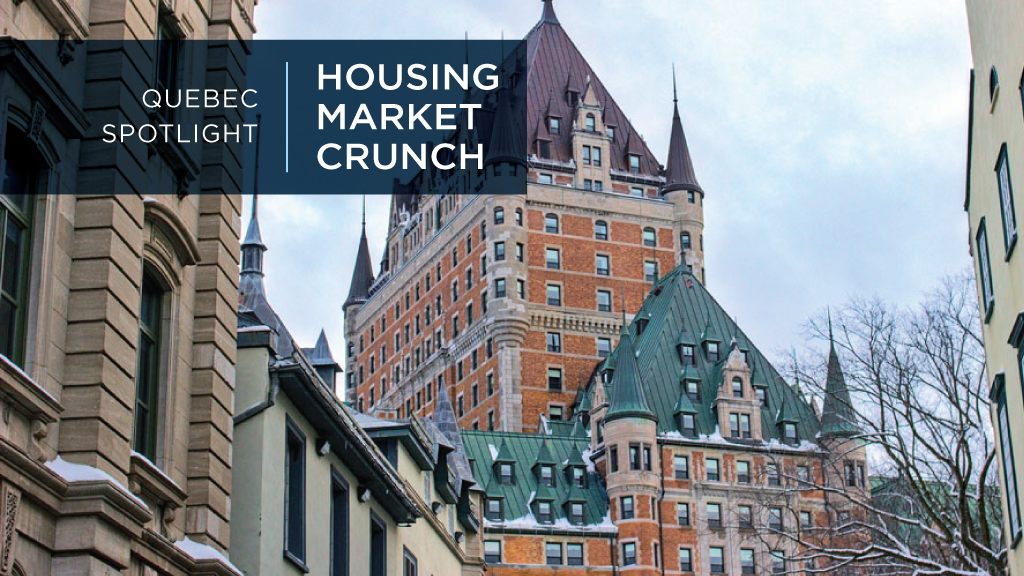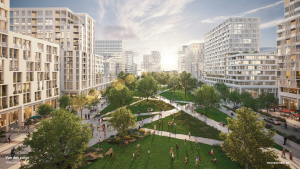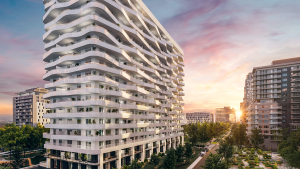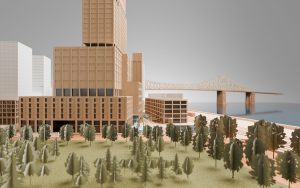QuebecŌĆÖs three major housing markets, Montreal, Quebec City and Gatineau, see similar trends in somewhat different intensities.
These might be characterized as a housing shortage fuelled by immigration, inflation and labour costs, and a somewhat recovering market for 2024. But donŌĆÖt expect prices to come down.
In Gatineau, a municipality that encompasses five regions across the river from Ottawa, rental vacancy rates at 1.1 per cent remain at an historically low level though ŌĆ£stableŌĆØ since 2018, CMHC said in its January rental market report.
An average two-bedroom purpose-built apartment went for $1,252 last year, an increase of 8.9 per cent.
Meanwhile in Montreal vacancies were slightly better at 1.5 per cent and the average price was $1,096, up 7.9 per cent. Quebec City fared worse with a 0.9 vacancy rate but cheaper units at $1040, up 4.8 per cent.
Residential construction started off slow last year, a hangover from 2022 but improved markedly in December, a Desjardins report says.
In fact, overall starts were at 2016 levels with only 38,912 built. And while rental starts outpaced other new construction, they also declined the most for all sectors with 9,000 fewer being built. But the province led the country in rental starts with well over 60 per cent of new starts compared to less than 40 per cent elsewhere.
And while home prices have generally stabilized since 2022 limited inventory resulted in the average provincial home price hitting a record $507,740 in January. However, the average price of a newly built home topped $870,000 in December.
All regions, even remote ones, are experiencing, if not a crisis, a crunch in availability.
ŌĆ£What weŌĆÖre seeing, even in Gasp├®sie (the Gasp├® Peninsula) far far in the east, there is a housing shortage in a lot of places in the sense that availability is rapidly going down under two and three per cent,ŌĆØ says Gabriel Gigu├©re, public policy analyst with the Montreal Economic Institute. ŌĆ£Even Rimouski, if IŌĆÖm not mistaken, itŌĆÖs under one per cent. So, what weŌĆÖre seeing now is that units of housing have got to be built across the province.ŌĆØ
Gigu├©re said the new home market has remained stagnant too long.
ŌĆ£And itŌĆÖs not going well in 2024. In the first two months weŌĆÖre minus nine per cent in housing starts when compared to 2023.ŌĆØ
Desjardins predicts starts will ŌĆ£gradually pick upŌĆØ this year based on interest rate cuts but wonŌĆÖt return to their 2021 peak.
Recruiting labour to build homes is also likely to be less challenging, the Commission de la construction du Qu├®bec found in a survey of members. That should lessen labour cost pressures and generate building activity.
Gigu├©re says housing starts could be accelerated if there was more imagination put into the market. Too many cities, planners and developers are still biased towards traditional housing. New developments can be hindered by arcane zoning laws and red tape.
ŌĆ£You donŌĆÖt have a lot of municipalities that will allow four units,ŌĆØ he says. ŌĆ£Municipalities need to be sensitized to this need for densification. ThereŌĆÖs a lot of the classical view of single home, detached family. So, this is maybe something that will go forward, but right now you donŌĆÖt have the political feeling that itŌĆÖs changing.ŌĆØ
Gigu├©re proposed a mix of housing styles, not just single-family but townhouses, duplexes and triplexes. This could fill the ŌĆ£missing middleŌĆØ between single-family and highrises.
ŌĆ£A townhouse is bigger than a condo, so people living in the suburbs might want to live in a townhouse,ŌĆØ he said.
St├®phanie Lapierre, principal economist with the Quebec Professional Association of Real Estate Brokers, said thereŌĆÖs an innate contradiction in the housing market among the provinceŌĆÖs regions.
Prices in Montreal are higher.
ŌĆ£But we also see in some more affordable markets like the Quebec region the prices are lower, but the inventory is so low that it could be difficult to find the right property for your needs.ŌĆØ
Desjardins says several cities have introduced property tax credits to accelerate builds.
And the provincial government has tabled construction industry reforms to ŌĆ£make it easier for employers to assign workers where theyŌĆÖre needed.ŌĆØ
Avi Friedman, a McGill University architect professor with a specialty in home design, says there has been less government intervention in the market in recent years.
ŌĆ£Housing was left to the private sector with very little intervention by the government and we are bearing the consequences now.ŌĆØ
But one thing heŌĆÖs noticed is that single-family homes are declining in popularity.
ŌĆ£You see lots of six to 12 storeys. So, there is a transition here.ŌĆØ
And then there are the few out-of-the-box blockbuster developments that are changing the face of a city like Montreal.
One is developer CarbonleoŌĆÖs $7 billion Royalmount ŌĆ£eco-communityŌĆØ with more than 3,000 albeit ŌĆ£upscaleŌĆØ units, on the 43-hectare former Blue Bonnets horse racetrack.
Then thereŌĆÖs the recent proposal by the Vision Bridge-Bonaventure Consortium for 9,500 housing units ŌĆö 20 per cent affordable ŌĆö for the cityŌĆÖs Peel Basin near downtown that would cover an area as large as eight football fields.











Recent Comments
comments for this post are closed